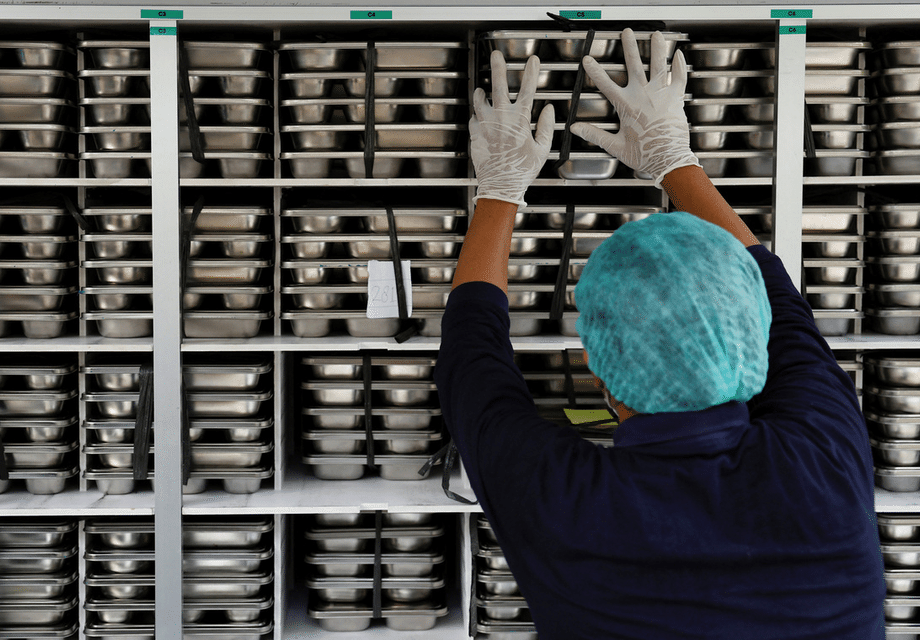A flagship welfare promise faces a safety test
Calls to pause Indonesia free school meals program have intensified after more than 500 children fell ill in the largest mass food poisoning to date. Health focused non governmental organizations said the nationwide scheme should be temporarily suspended while stronger safety checks are put in place. Launched in January, the program has already reached more than 20 million schoolchildren and mothers, with an official target of 83 million recipients by the end of the year. The budget for 2025 is 171 trillion rupiah, about 10 billion dollars, and government planners expect to double that in 2026. Since the rollout, thousands of children have reported nausea, vomiting, and diarrhea after eating the free meals. Civil society monitors say at least 6,452 children have been affected across multiple provinces. The National Nutrition Agency, known as BGN, said that out of roughly one billion portions served there have been 4,711 suspected poisoning cases and that investigations are under way. Both tallies point to a large volume of meals and a significant number of preventable illnesses.
- A flagship welfare promise faces a safety test
- How the program grew so fast
- Inside the worst outbreaks
- What NGOs and health experts want changed
- Government response and political stakes
- Why mass catering is risky in tropical conditions
- Nutrition goals versus ultra processed menus
- Fixes that can work without a nationwide pause
- Key Points
Six organizations, including the Center for Indonesia Strategic Development Initiatives and the Movement for Mother and Child Health, brought their concerns to a parliamentary committee that oversees health policy. They urged the government to create a formal mechanism to audit any kitchen that reports an outbreak, to publish the results, and to suspend service there until the cause is fixed. They warned that many local menus still rely on ultra processed items that do not meet the program nutrition goals and may raise long term disease risk. The committee deputy chair, Charles Honoris, said he would convey the proposals to the National Nutrition Agency, while stressing that the program will continue because it is seen as a strategic policy priority. Agency head Dadan Hindayana expressed regret over the outbreaks and promised a review of kitchen standards.
How the program grew so fast
The free meals plan is among the highest profile pledges of President Prabowo Subianto. It was sold as a way to improve child nutrition, increase school attendance, and reduce stunting. Indonesia is a vast archipelago with thousands of islands and difficult logistics. To hit the target of tens of millions of daily portions, local governments and contracted caterers have opened central kitchens at speed. Some facilities only recently began operating, which raises the odds of teething problems around training, sanitation, and delivery routines. The government aims to double the budget next year to keep expanding coverage.
From a public health perspective, two things are happening at once. The absolute number of meals is gigantic, and even a small error rate will expose many children. At the same time, a significant count of suspected poisoning cases is unacceptable in a program designed to support health. The difference between the NGO tally and the BGN figure likely reflects different definitions and reporting windows. One uses reports of sick children collected by local activists and schools. The other uses cases logged and verified by health offices and the agency. The gap underscores why Indonesia needs consistent national reporting, rapid confirmation through laboratories, and a transparent way to explain findings to parents.
Inside the worst outbreaks
Several local clusters have brought the issue to national attention. In West Java Garut region, 569 students from five schools fell sick after eating a chicken and rice menu prepared by one kitchen. About 30 children initially needed hospital care and ten remained in hospital two days later, officials said. Local leaders said the program would continue while they increase surveillance of the kitchen. They also simplified the menu for a period, offering bread, milk, boiled eggs, and fruit to lower immediate risk.
On the same week, 277 students in the Banggai Islands of Central Sulawesi fell ill. BGN suspended meal distribution in the affected area while health teams investigated. In Central Java Sragen, 365 people became sick in the largest incident recorded there. Authorities halted food distribution from the implicated kitchen and sent samples for laboratory testing. The suspected meal included turmeric rice, scrambled eggs, fried tempeh, a cucumber and lettuce salad, sliced apple, and milk. In earlier cases in West Java, lab results found Salmonella and E coli contamination, two bacteria commonly linked to improper cooking, cooling, or handling.
In Bengkulu province on Sumatra, about 400 children were taken for treatment after falling ill. The site under review had recently begun operations, which authorities said would be examined as part of the inquiry. Bengkulu Vice Governor Mian said the focus is to stop service from the kitchen in question while the cause is identified.
Vice Governor Mian said authorities were taking immediate steps to contain the risk and trace the source.
We will temporarily suspend operations at this kitchen while we investigate where the weaknesses lie.
After visiting students in hospital during a separate cluster, Dadan Hindayana, the head of BGN, said the agency would tighten supervision and improve procedures.
We must improve quality.
In Sragen, local government leader Sigit Pamungkas urged patience while laboratory results come back, and pressed for higher standards across the scheme.
We cannot draw any specific conclusions right away. The free meals program needs to be more stringent and more hygienic.
What NGOs and health experts want changed
Health groups have called for a short pause to reset standards or, at minimum, targeted suspensions at kitchens linked to outbreaks. The Network for Education Watch, known as JPPI, described the repeated incidents as a failure across the system and urged the government to stop service until strict oversight is in place. The Center for Indonesia Strategic Development Initiatives told lawmakers that there is no clear mechanism to evaluate kitchens with cases, to retrain staff, or to decide when to restart service. These groups also want a sharper focus on nutrition quality, not just calories and cost.
Many menus still include ultra processed items because they are cheap, easy to store, or fast to portion. That helps meet volume targets but may clash with the program goal of nourishing growing children. Doctors warn that repeated reliance on processed meats, sugary drinks, and salty snacks can raise the risk of non communicable diseases such as diabetes and hypertension later in life. Health advocates are urging a pivot to simple, minimally processed foods such as eggs, legumes, fresh vegetables, milk, fish, and fruit, combined with safe preparation and portion control.
Dr Tan Shot Yen of the Mother and Child Movement argued that the nutrition mandate is being diluted by convenience products.
The distribution of ultra processed food has changed the main goal of providing nutritious food and it could trigger non communicable diseases.
NGOs also want tighter procurement rules, independent audits, and a public dashboard of kitchen scores and incident reports. They have asked for clear timelines for corrective action, mandatory food safety training, and written standard operating procedures that include how to handle complaints from parents and teachers.
Government response and political stakes
The parliamentary committee deputy chair Charles Honoris said the proposals from health groups would be delivered to BGN. He also underscored that the meals will continue because the policy is considered strategic for child welfare and social support.
The program is strategic and will be executed.
The government budget of 171 trillion rupiah for 2025 is set to rise in 2026 as the program scales up. Officials have apologized for recent outbreaks and promised investigations. The political context is sensitive. Fiscal trade offs tied to the program, including spending cuts in several ministries, have fed public debate and campus protests this year. Allegations of irregularities around payments to caterers have surfaced, with police opening an investigation in Jakarta after a meal provider reported non payment and suspected embezzlement. Indonesia anti graft officials warned earlier this year that large assistance programs carry a real risk of fraud if controls are weak. Managing that risk while protecting children health has become a test of both competence and credibility.
Why mass catering is risky in tropical conditions
Mass feeding can be safe, but it is unforgiving when systems slip. In hot, humid environments, bacteria multiply quickly if cooked food is left in the danger zone, the temperature range where microbes grow fastest. Rice and chicken, common elements in school menus, are frequent vehicles for contamination. Improper cooling can allow Bacillus cereus or Salmonella to flourish. Raw vegetables can carry pathogens if washed with unsafe water. Milk must be kept cold during transport. Large batches heighten the chance of cross contamination between raw and cooked items unless work surfaces, knives, and storage bins are kept separate.
Food safety experts use hazard analysis and critical control points (HACCP) to break down each step. Critical points include receiving supplies, storage at safe temperatures, thorough cooking, rapid cooling, hygienic packing, and timely delivery. Each point requires trained staff, working thermometers, clean water, and a plan for what to do when something goes wrong. In a sprawling country with many new kitchens, weak links can appear in unexpected places, from an overloaded refrigerator to a delivery truck stuck in traffic for hours. Without tight time control and reliable cold chain, even a well cooked meal can become unsafe by the time it reaches a classroom.
Nutrition goals versus ultra processed menus
The free meals program was pitched as a nutrition intervention to reduce stunting, a condition of impaired growth that affects about one in five Indonesian children under five. The science behind school feeding shows benefits for attendance and learning when meals are both safe and nutrient dense. That means sufficient protein, iron, calcium, vitamins, and fiber, with limits on saturated fat, sugar, and salt. A program of this size is attractive to suppliers of packaged foods, which are easier to store and ship but often less nutritious. If field managers lean on instant noodles, sweetened drinks, ultra processed sausages, or flavored snacks, the program can hit quantity targets while missing nutrition targets.
Health advocates prefer simple menus built around staples such as rice or tubers, paired with eggs, tofu or tempeh, seasonal vegetables, fruit, and milk. These are familiar foods, relatively affordable, and acceptable to children. The challenge is to keep menus varied, meet micronutrient needs, and provide safe water for washing and cooking. With clear standards, careful procurement, and training, kitchens can deliver meals that are both safe and nourishing without depending heavily on processed items.
Fixes that can work without a nationwide pause
Indonesia does not have to choose between feeding children and protecting them. Several targeted measures can reduce risk quickly while the program continues to operate.
Targeted suspensions and rapid response teams
Suspend any kitchen tied to an outbreak within hours, not days. Deploy provincial rapid response teams with authority to inspect, collect samples, retrain staff, and approve a restart when control measures are verified. Keep a buffer of alternative suppliers to prevent service gaps while a site is offline.
Transparent kitchen evaluations
Adopt a simple, public scoring system for kitchens, posted online and at school gates. Include cleanliness, temperature logs, water tests, pest control, staff training, and delivery times. Publish incident reports and corrective actions so parents know what changed before service resumes.
Time and temperature control
Set strict limits on how long food can sit after cooking. Use insulated containers and ice packs for cold items. Require thermometers for every delivery. Random spot checks, with sanctions for violations, create incentives to comply. Keep cooked rice and meats out of the danger zone with hot holding or rapid cooling.
Safer menus and procurement
Standardize a core set of safe recipes that avoid high risk combinations during hot months. Prioritize fresh, minimally processed proteins and produce from vetted local sources. Ban the routine use of sugary drinks and ultra processed meats. Contract suppliers based on safety and nutrition metrics, not just cost.
Training, audits, and community monitoring
Invest in regular training for cooks, packers, and drivers on hygiene, cross contamination, and allergen control. Use independent auditors to verify HACCP plans. Give parents and teachers a hotline and a simple digital form to report problems, with responses tracked in public dashboards. Encourage schools to keep a small reserve of shelf stable, nutritious items as a fallback when deliveries are delayed.
Data, dose, and documentation
Require daily logs for cooking temperatures, cooling times, and handwashing. Keep retained samples from each batch for 48 hours so lab tests can pinpoint causes if children fall ill. Set up a unified database that links kitchens to schools so clusters can be identified quickly and traced to a source.
Key Points
- Health groups asked the government to suspend free school meals temporarily after the largest mass poisoning sickened more than 500 children.
- Civil society monitors count at least 6,452 children affected since January, while the nutrition agency says 4,711 suspected cases out of about one billion portions are under review.
- The program serves more than 20 million recipients and aims to reach 83 million this year with a budget of 171 trillion rupiah, about 10 billion dollars.
- Local clusters hit Garut, Banggai, Sragen, and Bengkulu, prompting temporary halts at affected kitchens and lab testing of food samples.
- NGOs want a formal audit mechanism, targeted suspensions, public kitchen scores, and menus with fewer ultra processed items.
- The National Nutrition Agency apologized for the cases and promised investigations and tighter supervision; parliament leaders say the program will continue.
- Experts say mass catering in tropical conditions requires strict time and temperature control, reliable cold chain, and trained staff at every step.
- Practical fixes include rapid response teams, transparent reporting, safer procurement, and routine HACCP based audits to prevent repeat outbreaks.




